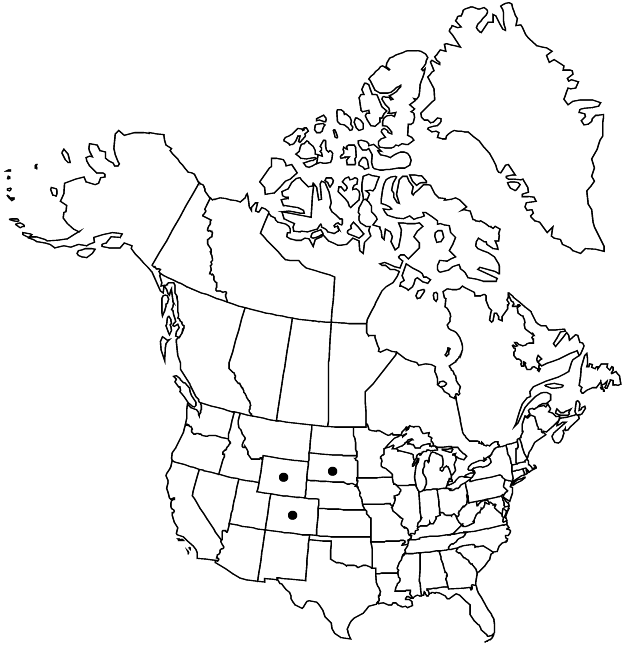Paronychia depressa
Bull. Torrey Bot. Club 26: 236. 1899.
Plants perennial, often matted; caudex branched, woody. Stems prostrate to sprawling, much-branched, 8–15 cm, scabrous-puberulent to puberulent throughout. Leaves: stipules lanceolate, 2–8 mm, apex acuminate, entire; blade linear, 8–15 (–23) × 0.5–1 mm, leathery, apex shortly cuspidate, puberulent. Cymes terminal, 3–7-flowered, branched, congested, in clusters 7–25 mm wide. Flowers 5-merous, ± ovate, with prominently enlarged hypanthium and calyx tapering only slightly distally, 2.3–3.5 mm, puberulent; sepals green to purple-brown, midrib and lateral pair of veins ± obscure, oblong to lanceolate-oblong, 1.7–2 mm, leathery to rigid, margins whitish to translucent, 0.05–0.1 mm wide, scarious, apex terminated by awn, hood prominent, rounded-triangular, awn divergent, conic in proximal 1/2–2/3 with yellowish, scabrous spine 0.7–0.9 mm; staminodes filiform, 0.5–0.8 mm; style 1, cleft in distal 1/3–2/3, 0.8–1.4 mm. Utricles ± ovoid, 0.8–0.9 mm, smooth, glabrous. 2n = 32.
Phenology: Flowering summer.
Habitat: Dry plains, rocky ridges, hillsides
Elevation: 800-3000 m
Distribution

Colo., S.Dak., Wyo.
Discussion
Paronychia depressa is considered to be closely related to the nearly allopatric P. jamesii.
Selected References
None.
Lower Taxa
"/10" is not declared as a valid unit of measurement for this property. "/10" is not declared as a valid unit of measurement for this property.